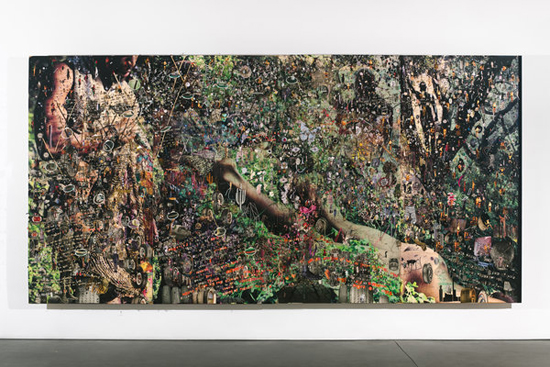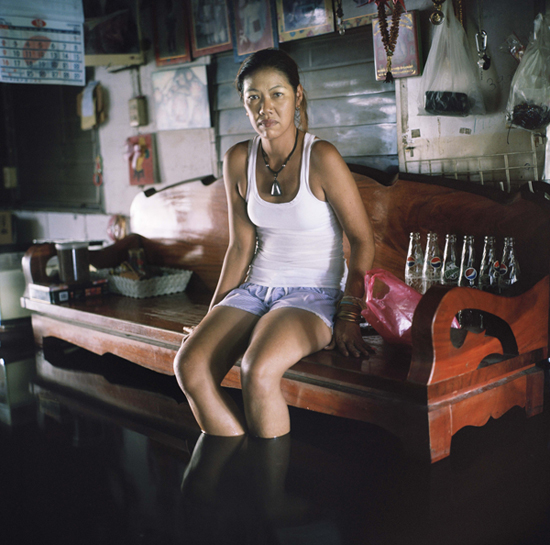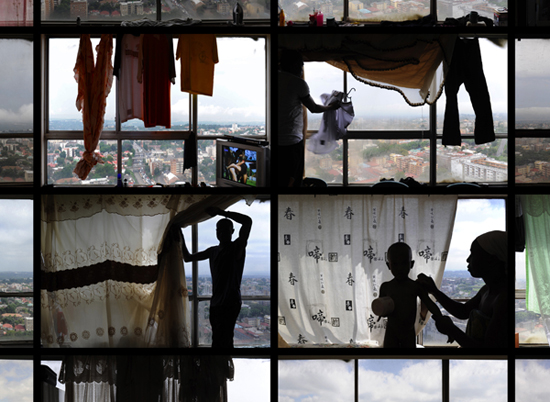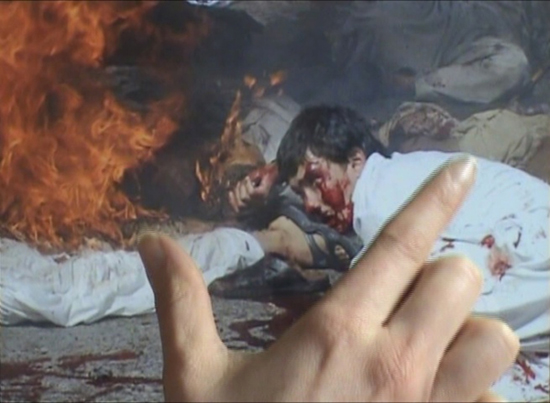“A Different Kind of Order” – The ICP Triennial
Last weekend, after visiting CCNY’s Zine and Self-Published Photo Book Fair, I wandered over to ICP for a visit to their bookstore. I walked over with the intention of picking up a signed copy of Todd Hido’s new book “Excerpts from Silver Meadows,” which I did, along with the new 3rd edition of Taryn Simon’s new classic “An American Index of the Hidden and Unfamiliar” that had been on my photo book wish list for a while. But as I walked there, I remembered that the fourth triennial was on display and decided to see what it was all about.
The exhibition features 28 artists working in photography, video, sculpture, collage, and related media. The show’s curators Kristen Lubben, Christopher Phillips, Carol Squiers, and Joanna Lehan have crafted a collection of work that captures the instability and violence of our time, as well as the way we consume the gluttony of images around us.
In Elliott Hundley’s “Pentheus” that avalanche of images takes the form of an immense photo collage / sculpture that really must be seen in person to be appreciated. Gideon Mendel tackles issues of destruction and flood quite literally with his portraits of people standing in flood waters from locations all over his “Drowning World.”
Other highlights for me included the deceptively gorgeous and sublime drone photographs of Trevor Paglen, Michael Schmelling’s photographs of hoarders’ nests, and Mikhael Subotzy and Patrick Waterhouse’s three towering lightboxes made up of tiny photographs that resemble the South African residential tower and depict all the television sets, front doors, and windows of each unit of the tower.
But the piece that really got under my skin was Thomas Hirschhorn’s “Touching Reality.” Set in the back corner of the ground floor behind a heavy semi-opaque plastic curtain, this video plays in a dark room and feel like a secret. When I first walked in not knowing what the piece was about, I was met by the furtive glance of the only other person in the room, who left as soon as I entered. The video is a single-shot of an ipad that displays a slideshow of horrific images of death and mutilated bodies from sources that seem to range from war zones to terrorist bombings to crime scenes and car crashes. The images flash before the viewer’s eyes with the flick of the female finger operating the ipad. Her finger flies by some images, scrolls back to others, and zooms in on particularly gruesome details of some images. I stayed watching these images for longer than I thought I would, which is part of Hirschhorn’s intention. He wants us to look at the effects of violence and confront the very scenes the media hides for fear of upsetting viewers and think about our methods of image consumption since the only place I’ve seen images this violent is online. We live in upsetting times, and “Touching Reality” jarred me out of my pleasant Saturday reality to remind me of that.




